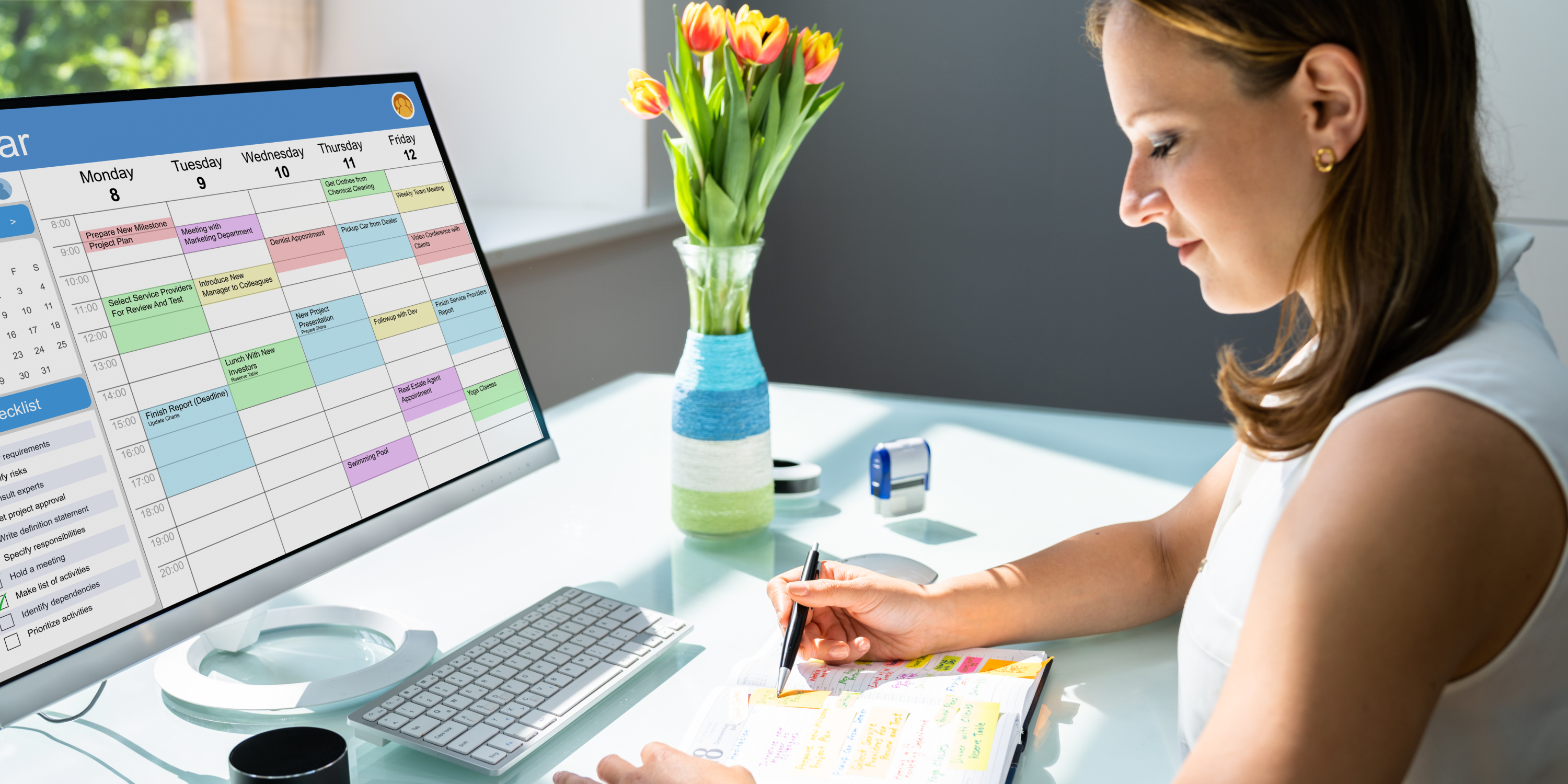
7 Ways to Improve Patient Scheduling
Greetings from our blog! If you work in a medical office or are a healthcare worker, you understand the importance of effective patient scheduling. It guarantees that patients receive care in a timely manner and lays the groundwork for a seamless operation. But let’s be honest—keeping track of a schedule may be difficult. We are here to assist because of this! We’ll look at seven practical approaches to enhance your patient scheduling procedure in this article. We can help you with everything from using technology to expediting check-ins to keeping lines of communication open with both patients and employees.
The Importance of Efficient Patient Scheduling
Effective patient scheduling is essential to any flourishing medical business. It guarantees that patients receive timely care, appointments are well-organized, and resources are used to their fullest potential. Imagine that patients are required to wait an excessive amount of time in the waiting area or that appointment slots are double-filled. This not only irritates patients and employees alike, but it also has a detrimental effect on output.
Having an effective scheduling system lets you make the most use of your resources. You can steer clear of overbooking or underutilizing the time of your workers by carefully controlling appointment lengths and scheduling them suitably.
Furthermore, more patient satisfaction results from effective scheduling. Patients feel appreciated and respected when they have short wait times and timely appointments. Their opinion of your practice is improved overall, and they are more likely to return in the future as a result of this great experience.
Understanding Your Practice’s Schedule
It is essential for healthcare providers to comprehend the calendar of their practices. With this knowledge, you can better care for your patients and streamline the scheduling process.
Spend some time first examining how patients come and go during the day. Is there a certain time of day when your office is a ghost town, or is it always packed? It is possible to make modifications that will increase productivity and decrease wait times by recognizing these tendencies.
Take into account things like patient needs and the length of the appointment. Make sure that there is enough time in your calendar to accommodate the possibility that certain appointments will take longer than others. Additionally, think about including buffer periods in the timetable to account for emergencies or unanticipated events.
Knowing the number of available providers at any given time is a crucial component of comprehending the timetable for your practice. This data will assist in deciding whether to schedule more employees or whether to restrict some services during times of high demand.

Utilizing Technology for Scheduling
The digital world we live in has brought about a shift in the way we live and work. Additionally, it has revolutionized the healthcare sector by simplifying and streamlining the patient scheduling process for medical practices. Healthcare professionals can increase patient satisfaction, expedite procedures, and shorten wait times by implementing technology-based scheduling.
Offering online booking choices is one of the main advantages of scheduling with technology. Nowadays, patients can easily schedule appointments using a computer or mobile device either at home or on the road. In addition to saving staff and patients time, this also lowers the number of phone calls.
Automated email or text message reminders are an additional benefit. By gently reminding patients of their forthcoming appointments, these reminders reduce the number of last-minute cancellations and no-shows. Practices may maximize productivity and optimize their schedules by utilizing technology in this way.
Additionally, while arranging appointments, healthcare providers can swiftly and readily access patient information by putting in place an electronic health record (EHR) system. This removes the need for them to physically sift through paper files or turn pages in binders because all relevant information is now easily accessible.
Implementing a Waitlist System
Does your practice have a problem with no-shows and last-minute cancellations? It’s time to think about putting in place a waitlist. You can keep your schedule organized and fill any voids in your plan with the help of this creative solution.
Patients can sign up for appointments that are currently filled through a queue system. The patient who is next in line receives an automatic notification when an appointment is canceled, giving them the chance to accept it. This minimizes wasted time and guarantees that every slot is used efficiently.
The first step in putting in place a good waitlist system is selecting the appropriate technological platform. Seek for scheduling software that can be easily navigated by employees and patients, and that interacts neatly with your current system.
Inform your patients that the queue is available as soon as you’ve chosen your software. Tell them about this easy choice when they visit or via email newsletters. Urge them to sign up for the list so you can notify them when a position opens up.
Providing your employees with the necessary training to handle the waitlist system is also essential. They should be aware of how notifications operate and how to respond to any queries or problems that patients could have.
Streamlining the Check-In Process
Patients may find it stressful to arrive at a doctor’s office. They don’t want to waste valuable time standing in line to check-in. For this reason, it’s critical that medical offices expedite the check-in procedure so that patients can enter and exit quickly.
Using online check-in options or self-service kiosks is one way to accomplish this. With the use of these technologies, patients can enter their details and finish the required documentation online before visiting the doctor. This removes the need for them to manually fill out forms and wait in line when they arrive.
Electronic medical records (EMR) systems can also significantly speed up the check-in procedure. With EMR systems, staff members no longer need to go through physical files or ask the same questions because patient information is easily accessible with a few clicks. Both the personnel and the patients benefit from this time savings.
Giving patients precise instructions about the identification or paperwork they must bring with them to their appointment is another successful tactic. This guarantees that everything goes properly and helps to avoid any delays during the check-in procedure.
Communication with Patients and Staff
Effective patient scheduling requires effective communication. Better overall satisfaction and more seamless encounters can result from staff and patient communication that is effective.
Reminder systems, including automated text messages or phone calls, can be used to remind patients of their future appointments, which can improve communication. This helps lower the number of no-shows and allows patients to reschedule if necessary.
Patients should also be given precise information on how to make an appointment, including how to prepare for it beforehand and fill out any documentation that may be required. By doing this, confusion and delays are reduced and it is ensured that the patient and staff are on the same page.
Active listening is a crucial component of communication. When patients have worries or inquiries, staff members should take the time to listen intently and make them feel heard and respected. This enhances patient happiness while also making it possible to comprehend each person’s needs more fully.

Continual Evaluation and Improvement of Scheduling Methods
Enhancing patient scheduling is a continuous process that needs regular review and modification. It’s critical to frequently assess your scheduling strategies to make sure they are fulfilling the demands of both staff and patients as healthcare practices change.
Analyzing data is one technique to assess the scheduling strategies you use. Examine data like wait times, no-show or canceled appointment rates, and patient satisfaction ratings. This data can offer insightful information on areas that might require development.
Asking patients and staff for their opinions is a crucial part of ongoing assessment. To ensure that everyone feels comfortable expressing their experiences and ideas for development, promote open communication. By identifying problem areas in the scheduling process, this feedback can assist you in making the required adjustments.
Keep up with technology developments and industry trends as well, as these can improve your scheduling system. Offerings like online appointment scheduling, automated reminders, and real-time wait time updates are examples of new software or solutions that can enhance patient satisfaction and productivity.

